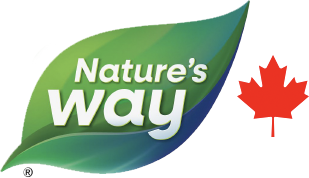Published on June 4, 2020
How to get enough omega-3 during pregnancy
As a mom, you want to provide your baby with the healthiest start possible. Because of their brain development benefits, that includes getting more omega-3 fatty acids in your diet.1
Why are omega-3s important during pregnancy?
Omega-3 fatty acids are essential fats. While they have many functions in our body and are important for good health, our bodies cannot produce them, so we have to get them from our diet or through supplementation.
Omega-3s become even more important during pregnancy because they travel through the placenta to your baby, supporting brain and tissue growth.1
Why are omega-3s important while breastfeeding?
Breastfeeding mothers are the sole source of omega-3 fatty acids for developing babies. For women who choose to formula feed, most types of formula are fortified with omega-3.
Several authoritative bodies, including the European Commission, the Food and Agriculture Organization of the United Nations and the World Health Organization, make recommendations for omega-3 intake not only during pregnancy but also breastfeeding, highlighting the benefits of DHA (docosahexaenoic acid) specifically. DHA is the most abundant omega-3 fatty acid in the brain and retina and it plays a key role in infant brain and eye development. Pregnant and breastfeeding women with higher intakes of DHA transfer more DHA to their fetus, and supply more DHA in their breastmilk.2
How can I make sure I’m getting enough omega-3?
The three key types of omega-3 fats are:
- ALA (alpha-linolenic acid): Found in certain high-fat plant foods, especially flax seeds, chia seeds, and walnuts.
- EPA (eicosapentaenoic acid): Found in fatty fish, seafood, fish oil, and algal oil.
- DHA (docosahexaenoic acid): Found in fatty fish, seafood, fish oils, and algal oil.
When you eat fatty fish during pregnancy, you can get a lot of omega-3 fats and other important nutrients like protein, vitamin D, zinc and iron. The healthiest ways to cook fish include grilling, poaching, broiling or baking.1 If your diet doesn’t permit the consumption of fish – or you just don’t like the taste – you still have options. Canola oil, flax oil, walnut oil, walnuts and flax seeds are all good sources of omega-3 ALA.
However, it may be difficult to get the recommended levels of EPA and DHA through just food sources. In 2014, the WHO recommended pregnant and lactating women get at least 300 mg of EPA+DHA (of which 200 mg is DHA) per day. One option to meet these recommendations is through supplementation with a high-quality omega-3 like our new NutraVege Prenatal. It's an algal oil-based omega-3 that provides 700 mg of EPA+DHA per dose. Speak to your healthcare practitioner about your prenatal omega-3 needs.
Are algal oil omega-3s less potent than fish oil-based options?
Compared to fish oil-based products, plant-based omega-3s have historically only been able to deliver significantly lower dosages of EPA+DHA. Our NutraVege supplements offer a purely plant-based omega-3, derived from algae with equivalent potencies of EPA+DHA to the average fish oil product.
Available in a delicious lemon ginger flavour, our new NutraVege Prenatal is an excellent option.
All NutraVege products are ultra-pure, great-tasting and unsurpassed in quality and innovation. Plus, they're PureCheck Verifiable –so you can trust that what you read on the label matches the product inside.
- https://www.canada.ca/en/public-health/services/pregnancy/omega-3-fatty-acids-fish-during-pregnancy.html
- https://www.canada.ca/en/health-canada/services/publications/food-nutrition/prenatal-nutrition-guidelines-health-professionals-fish-omega-3-fatty-acids-2009.html


